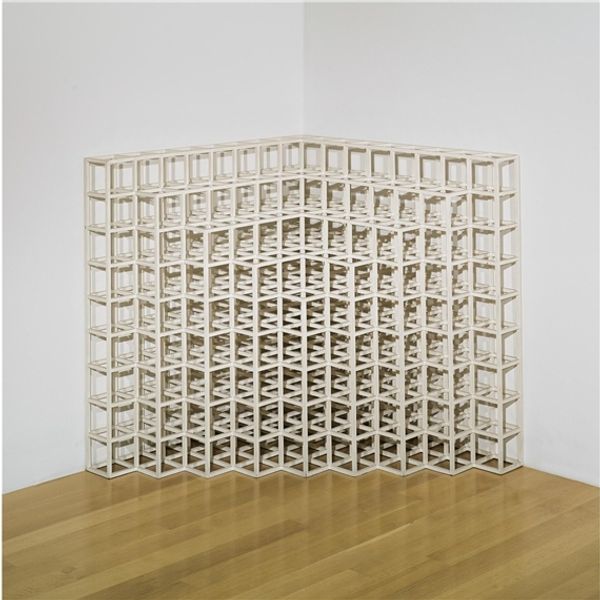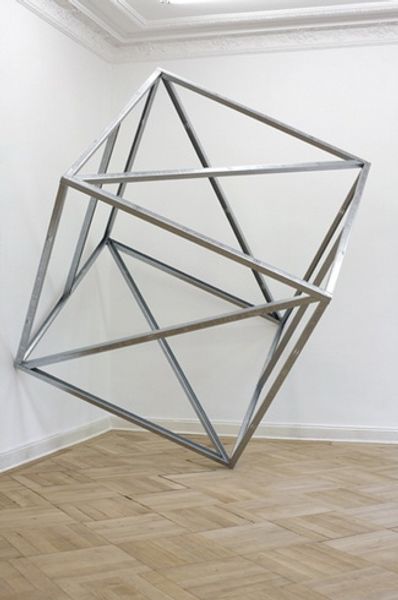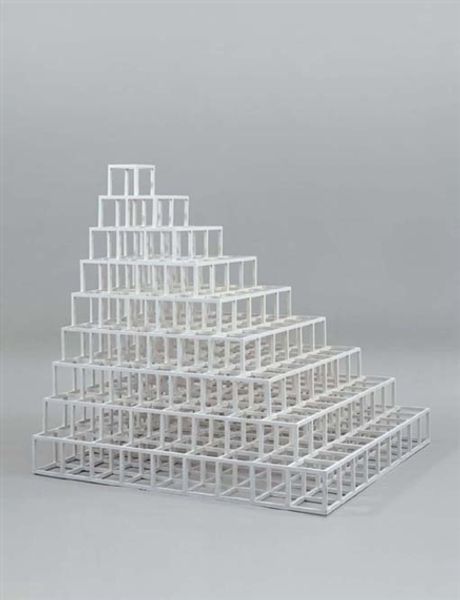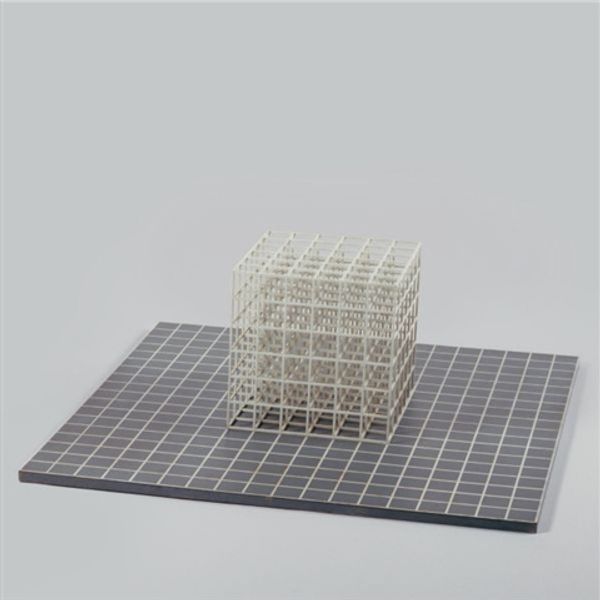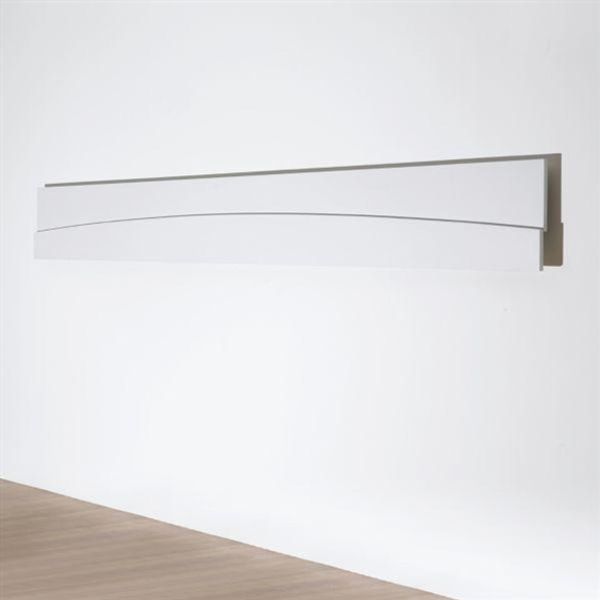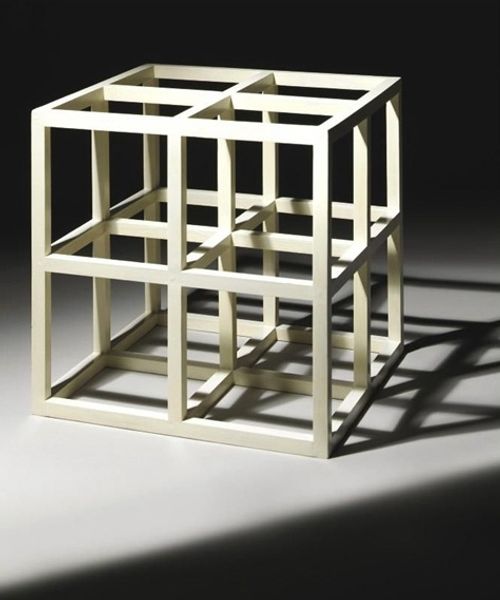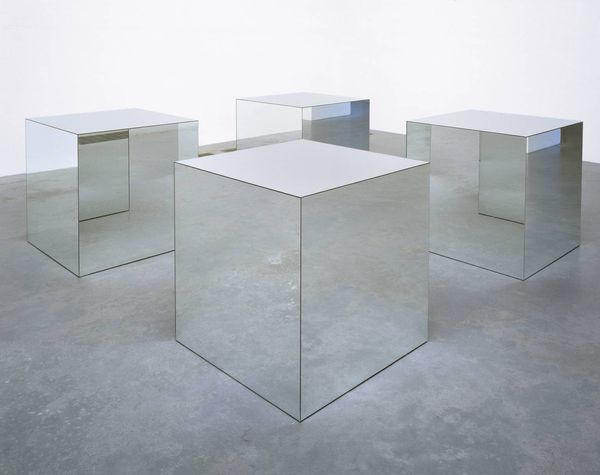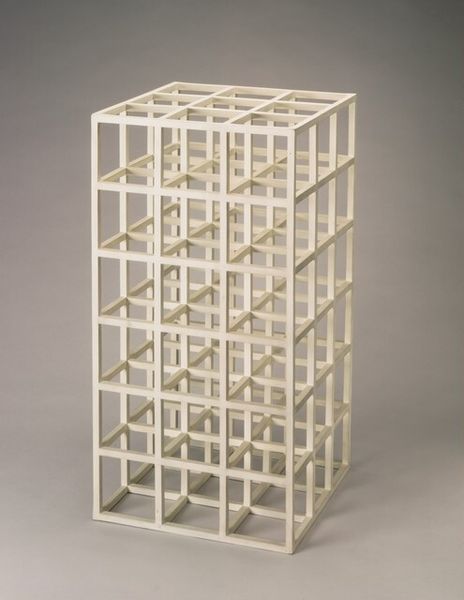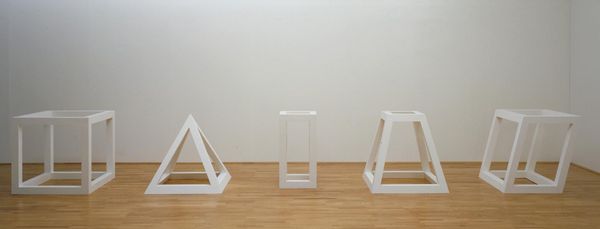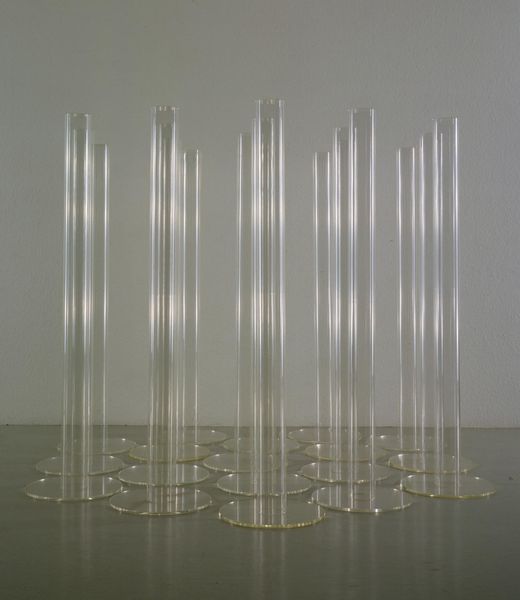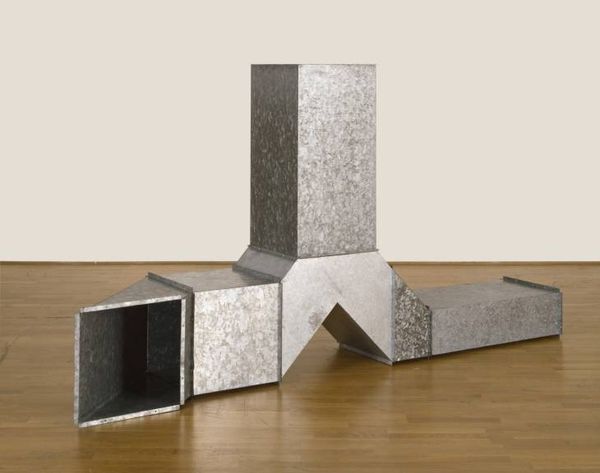
metal, sculpture, installation-art
conceptual-art
minimalism
metal
postminimalism
form
geometric pattern
minimal pattern
geometric
sculpture
geometric-abstraction
installation-art
line
Copyright: Sol LeWitt,Fair Use
Curator: Standing before us is Sol LeWitt's "Corner Piece #4," created in 1976. It's a sculpture that really embodies the minimalist aesthetic, focusing on the intrinsic qualities of form and structure. Editor: It’s like a skeletal ziggurat emerging from the corner, isn’t it? Stark, almost unsettling, but there’s also a curious beauty in its rigorous geometry. The light plays on those metal frames... feels a bit like a dreamscape built of logic. Curator: The beauty, as you observe, is found within the logical system that generates the form. LeWitt’s corner pieces are designed to interact with the architecture, creating a dialogue between the constructed space of the room and the constructed space of the sculpture itself. Note how each cube is identical, how it uses serial progression to create its own set of rules, then the piece carries out that pattern without any visible expression. Editor: Yes, but that pattern itself evokes something beyond cold logic. The way it rises, falls... suggests a kind of deconstructed ruin, or a blueprint for some impossible architecture. Almost feels… melancholy? Maybe because something so calculated also feels so fragile. And also there's something almost architectural that really defines its placement in the corner of the room. Curator: Precisely! Its interaction with the corner of the room highlights its nature, a literal engagement with architectural space. Its visual appeal relies heavily on principles from semiotics, in how its open framework creates an environment and new visual language with its location. LeWitt created not only a thing but a kind of thought system. Editor: And I get it, yet I keep coming back to that visceral impression. It’s cold and distant, and precise. That almost makes it feel intimate. Art challenges through contradiction, doesn't it? LeWitt invites us into a space between control and chaos, thought and sensation. It seems that its intention in form gives the opposite feeling of purpose in thought and observation. Curator: A stimulating conclusion to considering form, intention, and emotion within LeWitt’s striking geometrical approach. Editor: Cheers to that, until our next adventure to spark something new and unexpected from even what looks so plain at first glance.
Comments
No comments
Be the first to comment and join the conversation on the ultimate creative platform.
